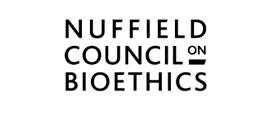Pig-Heart Boy- Circulation
Pig-Heart Boy by Malorie Blackman is about a young boy who needs a heart transplant, but the only chance for him is an experimental and controversial transplant. Before reading this story in class be aware of children’s sensibilities and different cultural beliefs as it does deal with a topic that some children may be sensitive to. The story does provide a good setting for learning about the heart and circulation including:
- identify and name the main parts of the human circulatory system, and describe the functions of the heart, blood vessels and blood
- recognise the impact of diet, exercise, drugs and lifestyle on the way their bodies function
Key scientific vocabulary: heart, circulation, lungs, organs, oxygen, carbon dioxide, nutrients, cells
Other fiction books with a similar theme:
Skellig– David Almond
The Circulation Game
A common misconception about circulation is that there is a 'single loop', with the arteries carrying blood from the heart to the body (where oxygen is deposited and waste collected) and the veins carry blood from the body to the heart (where it is cleaned and re-oxygenated).
The correct model is that of the ‘double loop’ or dual circulation with blood from the left side of the heart going to a point in the body and returning to the right side of the heart, where it is pumped to the lungs and then to the left side of the heart where it is pumped around the body.
A great way of demonstrating circulation is to carry out a whole class simulation with children. Children represent red blood cells as they move around a classroom-sized simulation of the human body simulating the dual circulation of blood. They may give oxygen to the organs then go back to the right side of the heart and flow to the lungs to get more oxygen. Then they flow to the left side of the heart to be pumped around the body.
This activity goes on to look at sickle cell anaemia and how this affects those with the inherited condition. There is also a diagram of the circulatory system to olour and label.
The Human Body Game
This resource contains Inside The Human Body is a high quality interactive simulation which allows children to take a look at the parts of ciculatory system and and explore the functions of the heart, blood vessels and blood.
Heart Beaters (Ages 9-11)
The working of their heart muscles can be improved through exercise. Sports people who exercise regularly maintain a low resting heart rate and also have a fast recovery rate after exercise. One definition of a person’s ‘recovery rate’ is the difference between their heart rate when they have just stopped a strenuous activity (one where they are out of breath) and their heart rate 1 minute later. The healthier the heart, the more it will slow down in the first minute after exercise.
This resource contains 3 complete lessons and background knowledge to work scientifically investigating how and why our bodies change and recover after exercise.
Animals, including humans: being human
This resource provides a selection of lesson plans, worksheets and teachers notes relating to animals, including humans at Year Six. They include activities in which children explore the structure of the heart and lungs and learn about the double circulation of blood through the lungs and the rest of the body. Lesson ideas also include investigating how exercise affects pulse rate and finding out why is exercise good for humans.
Using animal organs in our bodies
This short audio feature Bene and Mal, two microbes consider whether it is ethical to use other animals in human transplants. They consider this from the aspects of farming animals for organ transplants, the issues involved in different cultural or moral points of view.
What affects your heart rate?
This resource provides a set of videos and a practical investigation aimed at supporting working scientifically in the classroom and relating it to real world experiences. In the first video Professor Brian Cox joins a teacher to find out how to set up and run an investigation to find out how exercise affects heart rate. He then joins the class carrying out their experiment, who look at variation in heart rate across the class before and after exercise, as well as how long it takes their heart rate to return to normal. In the other videos Brian Cox visits a sports scientist, analysing the heart rate of athletes and scientists measuring how exercise affects climbers at high altitudes.






